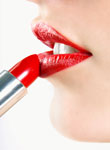 What do Macy’s, Apple, L.L. Bean and Target have in common? It’s not just the success of these companies that stands out, it’s the role of color in their branding strategies. The impactful black, red and white theme of Macy’s, the slick white of Apple, L.L. Bean’s evergreen color field and the iconic red of Target all play a role in the brands’ ability to grab consumers’ attention in and out of the store. Apple, in particular, will go so far as to use specialized lighting at its brick and mortar locations, further accentuating the products and the brand itself. Color resonates with shoppers and shapes how they think of particular brands, whether they feel more welcomed or less than accepted. Independent retailers can use the findings of color psychology studies to help leverage themselves in a competitive retail landscape.
What do Macy’s, Apple, L.L. Bean and Target have in common? It’s not just the success of these companies that stands out, it’s the role of color in their branding strategies. The impactful black, red and white theme of Macy’s, the slick white of Apple, L.L. Bean’s evergreen color field and the iconic red of Target all play a role in the brands’ ability to grab consumers’ attention in and out of the store. Apple, in particular, will go so far as to use specialized lighting at its brick and mortar locations, further accentuating the products and the brand itself. Color resonates with shoppers and shapes how they think of particular brands, whether they feel more welcomed or less than accepted. Independent retailers can use the findings of color psychology studies to help leverage themselves in a competitive retail landscape.
White
White is a stabilizing color that conveys a sense of balance. It opens up even the smallest spaces and makes everything set against it appear more precious. Bearing this in mind, many art galleries rely on simple white walls to make sure that the art on display is adequately noticed, and retailers can employ the same tactic in their stores by using white walls, white display fixtures and white in the company logo, to convey a clean, approachable look.
Red
Red is the power color used by restaurants and retailers to seize attention, rather than merely catch eyes. Thought to inspire impulse purchases and stimulate appetite, the color has a strong impact in any use and is not to be used lightly. In excess, red can relay impending danger or serve as a “warning” sign, so it should be used judiciously.
Yellow
Yellow is interpreted by the retina as being the brightest color, but is difficult to see against many colored backgrounds. It makes an excellent color when integrated into a brand logo and is effective in sale and clearance signage, as it isn’t as aggressive as red. For retailers looking to involve a vibrant color into their signage, yellow is a top pick to consider.
Green
Surround a customer with the color green, and he or she will likely feel relaxed and happy within minutes. The color most often connected with sustainability and environmental causes also can urge shoppers to make a purchase, especially online. There is a connection between “green” and “go” in shoppers’ minds, and retailers who use the color strategically can boost sales as a result. Be sure to include green somewhere in relation to an online shopping cart to yield the most results.
Blue
Blue dominates many corporate and government websites because studies show it communicates a sense of security. It also stands for links and connectivity. The Better Business Bureau employs the color as an unspoken reassurance to its customers that its messages can be trusted. To best make use of the color blue, place it in locations where a customer may want reassurance, such as a statement of online information security or return policy.
Purple
Purple can work in much the same way, but with an undertone of luxury and drama.
